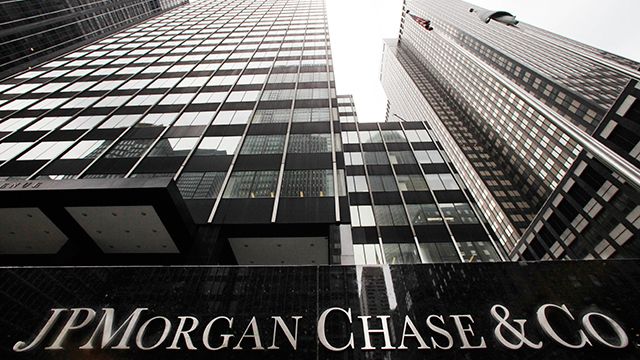
This post first appeared on the Campaign for America’s Future Blog.
If nothing else, William D. Cohan’s recent Nation article about JPMorgan Chase’s $13 billion settlement should confirm the public’s darkest suspicions about that institution and its CEO.
It was only logical to assume that the bank wouldn’t have agreed to what was then the largest bank settlement in history unless it believed the alternative was much worse. In that sense there are no new revelations in Cohan’s reporting. But it’s extremely satisfying to see the events leading up to the settlement laid out in such a clear, logical and sequential fashion.
Cohan guides readers to the conclusions that many of us reached some time ago: that JPMorgan Chase was as corrupt in its business practices as any other major bank (which is to say, quite corrupt); and that CEO Jamie Dimon convinced a lot of people otherwise, using only the power of his personality.
Although Dimon was among those who refused to speak with Cohan, Cohan was able to obtain some excellent quotes from some of the other major players in the negotiation process. Most telling was this one from Associate Attorney General Tony West, discussing the “statement of facts” which was released in lieu of concrete evidence as part of the settlement:
“I feel confident that we were able to craft a statement of facts which lays out the concept that this thing was illegal and created liability. So from that standpoint, I think the public knows that JPMorgan engaged in activity that we considered to be fraud.”
That’s a bittersweet paragraph. On the one hand, it’s satisfying to finally hear a senior Justice Department official acknowledge that the mega-bank run by the man once described as “the president’s favorite banker” committed fraud. But, contra West, it’s by no means clear that “the public knows” about the criminally fraudulent behavior which was rampant under Jamie Dimon’s leadership.
How can the general public possibly comprehend the depth and extent of Chase’s criminality without the names, emails, and specific deeds of its criminal bankers? And yet, that’s precisely the kind of detail that was suppressed in this deal. How valuable were those details? We know one thing: They were worth at least $13 billion to the management of JPMorgan Chase.
Sure, some left-leaning people will read William Cohan’s article in The Nation. But tens of millions of other people will see JPMorgan Chase’s advertising campaigns. Others will remember the self-serving spin Jamie Dimon dished up to compliant journalists like Roger Lowenthal, or pallid Dimon apologias like Andrew Ross Sorkin’s (both in The New York Times).
And that’s the point. If the public really understood how badly this bank’s employees acted, consumers and investors might stop doing business with them. Banks don’t commit fraud; bankers do. The fraud which led to this $13 billion settlement was committed by people – real people, people whose identities were often known to investigators. Consider this, from Cohan’s article:
“Among the documents Wagner [US attorney for Eastern District of California] uncovered was one in which an unnamed JPMorgan employee, who had been involved in purchasing pools of mortgages from third parties, warned two senior executives that ‘due to their poor quality, the loans should not be purchased and should not be securitized.’ She expressed her concerns in a letter to a managing director at the bank, who shared it with other managing directors. ‘JPMorgan nonetheless securitized many of the loans. None of this was disclosed to investors,’ Dimon conceded in the settlement agreement …”
It should be a routine investigative task to identify the “two senior executives,” the managing directors, and the other parties to this fraud. Investigators may already know their names. But their identities remain unknown to the public. Are they still employed by JPMorgan Chase? Are they in positions of trust somewhere else? We will probably never know.
As the CEO, Jamie Dimon bears ultimate responsibility for this scandal. But he had plenty of help. What did his Board do about the widespread corruption under his leadership, corruption which led to this $13 billion settlement? They gave him a raise.
And why not? They profited from the fraud too. And they almost certainly know that they all got off easy.
There is one conclusion to be drawn from the settlement’s otherwise vague “statement”: bankers at JPMorgan Chase engaged in widespread fraud, and in all likelihood they will never pay for their crimes – not with jail sentences, not by giving back their ill-gotten gains, not even by facing the opprobrium of the public.
So why wouldn’t they commit the same crimes again, the very first chance they get? Wrongdoing thrives in the shadows, and $13 billion buys an awful lot of shade.
The views expressed in this post are the authors’ alone, and presented here to offer a variety of perspectives to our readers.


